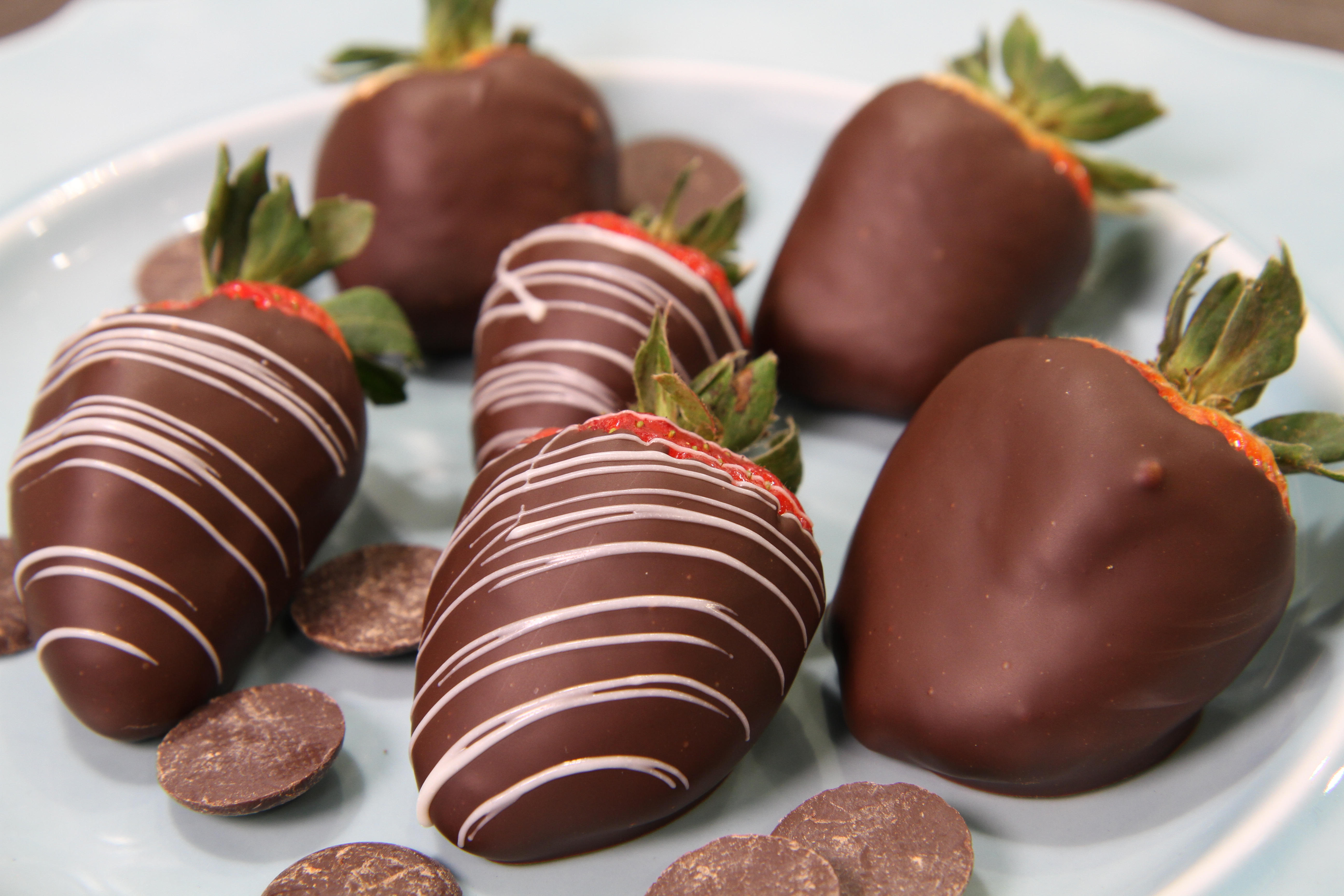Professional Chocolatiers know the secret to perfect chocolate is in the tempering. Tempering is the process of heating and cooling chocolate in such a way that encourages the cocoa butter to harden into a specific crystalline pattern, which maintains the chocolate’s sheen and texture. If done correctly, the process will turn dull, malleable chocolate into a shiny, firm confection that breaks with a sharp – satisfying – snap.
To produce the best chocolate possible, you’ll need to look past chocolate morsels and find something a bit more substantial. Chocolate chips have additives that allow them to retain their shape at higher temperatures (like in chocolate chip cookies) and will not temper correctly. Look for blocks of chocolate – even chocolate bars will do.
What happens if chocolate is not tempered?
Not tempering chocolate can lead to a number of problems including failure to set up hard at room temperature. The chocolate may become hard, but will look dull and blotchy. The internal texture may be spongy rather than crisp, and it can be susceptible to “fat bloom,” meaning the fats will migrate to the surface and make whitish streaks and blotches.
Chocolatiers recommend tempering in one pound quantities because chocolate will temper easier in larger batches. If you feel like one pound of chocolate is more than you need, don’t worry, tempered chocolate can keep for months at cool room temperatures. Chop your one pound block into smaller, more manageable pieces.
Tempering starts with melting; and when it comes to melting chocolate, things aren’t always as easy as they seem. Since chocolate’s melting point is just below body temperature, it’s easy to melt, and even easier to burn. When heated at, or above 200°F (95°C), chocolate will burn. Melted directly over an open flame, burning is also very likely to happen. Using a double boiler and an instant-read thermometer you can ensure proper temperatures are reached and that the chocolate will not burn.
Place two-thirds of your chocolate pieces in the top of the double boiler as it sits over simmering water. Securely clip an oven alarm thermometer to the side of the boiler to monitor the temperature of the chocolate. Stir gently, and steadily, as the chocolate melts and temperatures rise.
Bring dark chocolate to 115°F (46°C), or if tempering milk/white chocolate, 110°F (43°C). Be very careful not to let your chocolate exceed this recommended temperature. Remove the chocolate from the heat, wipe the bottom of the bowl, making sure that no water droplets reach the chocolate, and set on a heat-resistant surface.
Add the remaining chocolate pieces and stir allowing the residual heat to melt the chocolate. As the chocolate melts, the batch will begin to cool. Once it reaches 84°F (29°C), remove the remaining (unmelted) pieces of chocolate and reintroduce the mixture to the double boiler for 5-10 seconds, or until the temperature climbs back up to 87°F (30°C). Do not allow the chocolate to exceed 91°F (33°C).
Congratulations, your chocolate is now tempered! You can spot test the batch by spreading a spoonful thinly over an area of wax paper and allow it to sit for 2-3 minutes. If the chocolate is shiny and smooth, it has been properly tempered. If it is dull and streaky – scrap the batch and try again.


Felicia says
Dear Mr/Mrs,
I would like to ask which Infra red thermometer best suited fo tempering chocolate?
Thank you
Jesse says
If it’s an infrared thermometer you’re after, try the IR-Industrial. (www.thermoworks.com/products/ir/ir-ind.html) Not only will it give you fast and accurate surface temps, but you can also equip the instrument with a Type K thermocouple and probe deep into the chocolate to get an accurate internal temperature. As it happens, the IR-IND is currently ON SALE. Good luck and happy tempering!
mics says
Hi Jesse,
Thank you for this helpful post!
I’m interested in ordering the MTC thermometer you linked to, and hope you may be willing to help me find a probe that would be most suitable for working with chocolate and sugar, in particular.
Is there any probe you can suggest?
Thank you, and happy holidays!
Jesse says
Have a look at a few of our probe options. Anything that is listed as Type K will work fine with the MTC Mini Handheld. When you’re talking about working with chocolate and sugar, you’ll most likely want a longer probe.
Rosalyn says
It seems you really know a great deal pertaining to this subject matter and it shows with this specific posting, called “Tempering Chocolate with Perfect Temperature | ThermoWorks”.
Thank you ,Max
Gloria Riker says
As a chocolatier I use my Thermopen IR regularly to temper chocolate. Having an accurate fast thermometer is a must for tempering. Since IRs only measure surface temp they work to take the temperature after the chocolate has been throughly mixed.
The instructions here to temper are combining two different tempering methods and if followed will result in more work than you need to do.
To temper chocolate you need to make sure you’re introducing the right kind of crystals at the right temperature. When introducing seed chocolate (the 1/3 of your chocolate you’ve held back to add when you’re cooling it down) there is no need to cool your chocolate all the way down to 84C then reheat. It’s only necessary to cool your chocolate to its target temp 86 – 88 for milk/white or 88-90 for dark.
It does take time for the right crystal structure to form so mixing your chocolate for several minutes when you’ve reached your target temp will help ensure your chocolate is in temper.